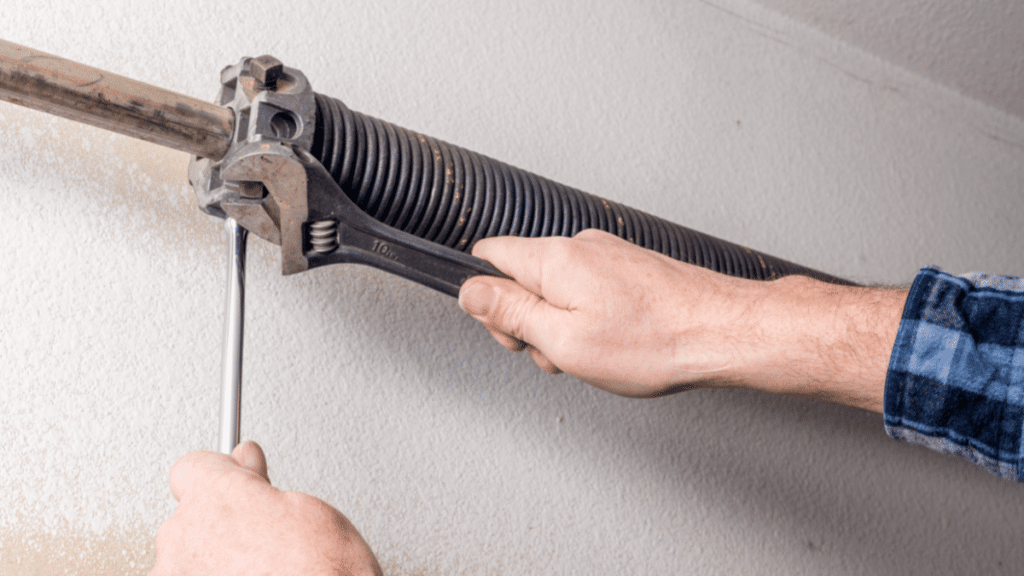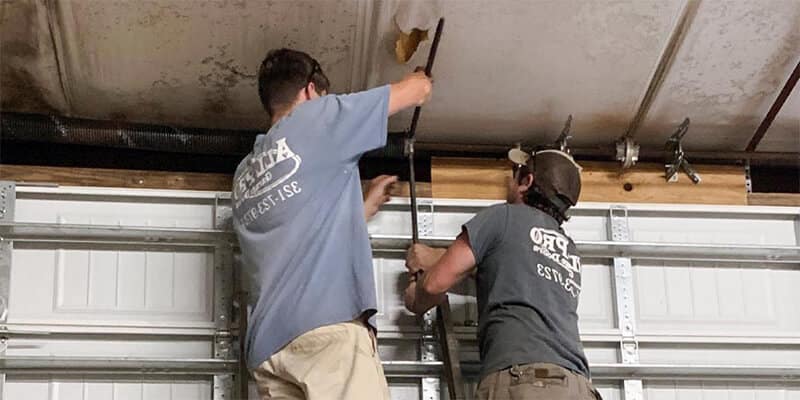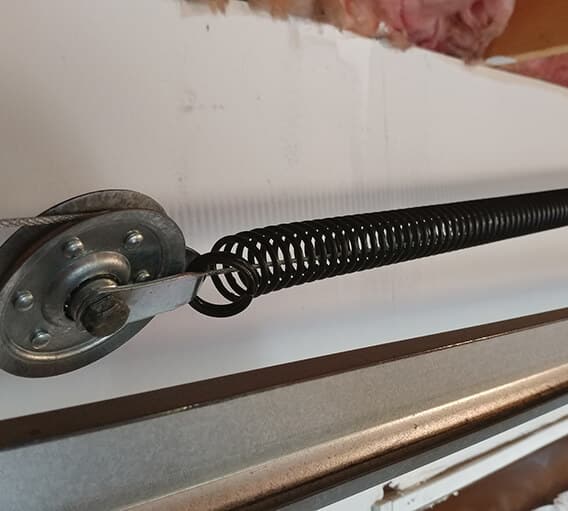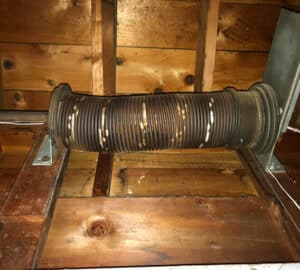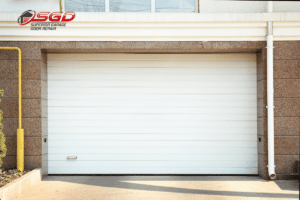Garage doors are an essential part of our homes, providing security and convenience. However, the smooth operation of a garage door relies heavily on its springs. In this article, I will guide you through the process of installing a garage door spring, ensuring that your garage door functions optimally and safely.
What are Garage Door Springs
Garage door springs are responsible for counterbalancing the weight of the door, making it easier to open and close. There are two main types of garage door springs: torsion springs and extension springs.
Torsion springs are mounted above the garage door and use torque to generate the necessary force. They are typically used for heavier doors and provide smoother operation. On the other hand, Extension springs are located on either side of the door and stretch to provide the necessary force. They are commonly found in lighter garage doors.
Table: Comparison of Torsion and Extension Springs
| Feature | Torsion Springs | Extension Springs |
| Location | Above the door | Along the tracks |
| Mechanism | Winding and unwinding | Stretching and contracting |
| Door Weight | Heavier doors | Lighter doors |
| Lifespan | Longer | Shorter |
| Safety | More controlled motion | Require safety cables |
Safety Precautions Before Replacing a Garage Door Spring
Before attempting to replace a garage door spring, it is essential to take certain safety precautions. Garage door springs are under high tension and can cause serious injuries if mishandled. Follow these safety measures to ensure a safe installation process:
-
Disconnect the power supply to the garage door opener to prevent accidental activation.
-
Use protective eyewear and gloves to protect yourself from any potential harm.
-
Secure the garage door in the fully open position using clamps or vice grips.
-
Read the manufacturer’s instructions carefully and follow them precisely.
By following these safety precautions, you can minimize the risk of accidents and injuries during the garage door spring installation process.
Tools Needed for Garage Door Spring Installation
Before you begin installing a garage door spring, gather the necessary tools to ensure a smooth and efficient process. Here are the tools you will need:
-
Winding bars or winding rods – used to apply tension to the torsion spring.
-
Adjustable wrench – for loosening and tightening bolts and nuts.
-
Socket set – for removing and installing various components.
-
C-clamps – used to secure the door during installation.
-
Safety goggles – for eye protection.
-
Work gloves – to protect your hands from sharp edges.
Having these tools readily available will make the installation process much more manageable and efficient.
Step-by-Step Guide to Installing a Garage Door Torsion Spring
Installing a torsion spring on your garage door requires precision and attention to detail. Follow these step-by-step instructions to ensure a successful installation:
1. Release tension
Release the tension from the old spring using winding bars and carefully remove it. This is a crucial step to ensure your safety during the replacement process.
2. Remove the old spring
Once the tension is released, carefully remove the old spring from its mounting brackets or cones. Be cautious as the spring may still have some residual tension.
3. Measure and prepare the new spring
Measure the length and diameter of the old spring to ensure you purchase the correct replacement. Prepare the new spring by attaching the necessary hardware, such as cones or brackets.
4. Install the new torsion spring
Slide the new torsion spring onto the torsion tube, ensuring it is centered. Wind the spring using the winding bars in a clockwise direction. The number of turns required depends on the weight and height of your garage door. Consult the manufacturer’s instructions or seek professional advice for the correct number of turns.
5. Secure the torsion spring
Once the torsion spring is wound correctly, secure it to the torsion tube using the set screws provided. Ensure the spring is centered and balanced before tightening the screws.
6. Test the garage door
Slowly release the clamps or vice grips holding the garage door in place. Check the door’s balance and movement to ensure the torsion spring is properly installed. Make any necessary adjustments to the spring tension to achieve optimal performance.
Following these steps will enable you to install a torsion spring on your garage door effectively.
Step-by-Step Guide to Installing a Garage Door Extension Spring
If your garage door uses extension springs, the installation process differs slightly. Here is a step-by-step guide to installing a garage door extension spring:
1. Measure and prepare
Measure the length of the existing extension springs and purchase replacements of the same length. Ensure the new springs have the same weight capacity as the old ones. Disconnect the safety cables from the old springs and remove them.
2. Install the new extension springs
Attach the new extension springs to the brackets on each side of the garage door. Ensure they are securely fastened and properly aligned. Connect the safety cables to the springs, ensuring they are tensioned properly.
3. Test the installation
Slowly release the clamps or vice grips holding the garage door in place. Check the door’s balance and movement to ensure the extension springs are properly installed. Make any necessary adjustments to the tension or cable placement for optimal performance.
By following these steps, you can successfully install extension springs on your garage door.
How Do You Know How Much Tension to Put on a Garage Door Spring?
Determining the correct tension for your garage door spring is crucial for its optimal performance and longevity. The amount of tension required depends on various factors, including the weight and height of your garage door. Here are some ways to determine the appropriate tension:
-
Consult the manufacturer’s instructions: The manufacturer’s instructions or product manual often provide guidelines on the recommended tension for the specific spring model. Refer to these instructions for accurate information.
-
Seek professional advice: If you are unsure about the correct tension for your garage door spring, it is best to consult with a professional garage door technician. They have the expertise to determine the appropriate tension based on your specific door and spring configuration.
-
Perform a balance test: Close the garage door and disconnect the opener. Lift the door manually to the halfway point and release it. If the door stays in place, the tension is likely correct. If the door falls or rises, the tension needs adjustment.
Finding the correct tension for your garage door spring may require some trial and error, but it is essential for proper functioning and safety.
How Many Turns Does a Garage Door Spring Have?
The number of turns required for a garage door spring depends on various factors, including the weight and height of the door. The correct number of turns ensures that the spring provides the necessary force to counterbalance the door. Here are some general guidelines:
-
Torsion springs: The number of turns for torsion springs is usually specified by the manufacturer. It is determined based on the weight and height of the garage door. The standard range is typically 7 to 10 turns for a standard 7-foot garage door.
-
Extension springs: Extension springs do not have a specific number of turns. Instead, they are installed with the correct tension, ensuring that they provide the necessary force for the door’s weight.
It is important to note that these are general guidelines, and the specific number of turns may vary depending on the manufacturer’s instructions and the characteristics of your garage door.
Common Mistakes to Avoid During Garage Door Spring Installation
While installing a garage door spring may seem straightforward, there are some common mistakes that can lead to safety hazards or improper functioning of the door. Avoid these mistakes to ensure a successful installation:
-
Using incorrect springs: It is crucial to use the correct type and size of springs for your garage door. Using the wrong springs can lead to excessive tension or insufficient force, causing the door to malfunction.
-
Insufficient safety precautions: Failing to take proper safety precautions can result in serious injuries. Always disconnect the power supply, secure the door in the open position, and wear protective gear.
-
Incorrect tension or turns: Improperly adjusting the tension or number of turns on torsion springs can affect the door’s balance and cause unnecessary strain on the system.
-
Ignoring professional advice: If you are unsure about any aspect of the installation process, it is best to seek professional assistance. Ignoring professional advice can result in costly repairs or accidents.
By avoiding these common mistakes, you can ensure a safe and successful garage door spring installation.
Tips for Maintaining and Prolonging the Lifespan of Garage Door Springs
Proper maintenance is essential to prolong the lifespan of your garage door springs and ensure their optimal performance. Here are some tips to keep your springs in good condition:
-
Regular lubrication: Apply a silicone-based lubricant to the springs, rollers, and hinges to reduce friction and prevent premature wear.
-
Inspect for wear and damage: Regularly inspect the springs for any signs of wear, damage, or rust. Replace any faulty springs promptly.
-
Keep the door balanced: A balanced garage door puts less strain on the springs. Test the balance periodically and make any necessary adjustments.
-
Avoid excessive weight: Do not overload your garage door with excessive weight, as it can put undue stress on the springs.
-
Professional maintenance: Schedule regular maintenance checks with a professional garage door technician to identify and address any potential issues before they become major problems.
By following these maintenance tips, you can extend the lifespan of your garage door springs and ensure the smooth operation of your garage door.
Signs that Your Garage Door Spring Needs Replacement
Over time, garage door springs can wear out or break, causing various issues. It is essential to identify the signs of a faulty spring to prevent further damage or accidents. Some common signs that indicate your garage door spring needs replacement include:
-
Difficulty opening or closing the garage door smoothly.
-
Uneven movement or tilting of the garage door.
-
Loud and unusual noises during operation.
-
Visible gaps or separation in the spring.
-
The door feels unusually heavy when manually operated.
If you notice any of these signs, it is crucial to replace your garage door spring promptly to avoid further complications.
Hiring a Professional for Garage Door Spring Installation
While installing a garage door spring can be a DIY project, it is not without risks. If you are unsure about your abilities or lack the necessary tools, it is recommended to hire a professional for the installation. A professional technician has the expertise and experience to safely and efficiently install garage door springs, ensuring optimal performance and safety.
Additionally, hiring a professional can save you time and potential frustration. They can accurately determine the correct spring type, size, and tension required for your specific garage door, preventing any potential mistakes or accidents.
Conclusion
Installing a garage door spring requires careful attention to detail and adherence to safety precautions. Whether you choose to install it yourself or hire a professional, ensuring a properly functioning garage door is essential for the security and convenience of your home. By following the step-by-step instructions and avoiding common mistakes, you can successfully install a garage door spring and enjoy a smooth-operating garage door for years to come. Remember, when in doubt, seek professional assistance to ensure the job is done safely and effectively.
If you’re unsure about installing a garage door spring yourself, or if you need any other garage door services, contact our professional technicians today. We have the knowledge and experience to handle all your garage door needs efficiently and safely. Don’t compromise on the safety and functionality of your garage door – let us take care of it for you!
Frequently Asked Questions About Garage Door Spring Installation
Can you over tighten a garage door spring?
Yes, over tightening a garage door spring can lead to issues such as the door slamming shut or difficulty in opening and closing. It is important to use the right amount of tension to counterbalance the weight of the door.
What happens if I use the wrong spring on my garage door?
Using the wrong spring on your garage door can result in improper operation and potential damage to the door and other components. It is crucial to choose the appropriate spring based on the weight and size of your door.
What happens if the garage door spring is too strong?
If the garage door spring is too strong, it can cause the door to close too quickly or slam shut, posing a safety risk. It is important to use the right amount of tension to ensure smooth and controlled operation.
Which way do you wind garage door springs?
The direction in which you wind garage door springs depends on the type of spring. Torsion springs are typically wound in a clockwise direction, while extension springs are installed with one end wound clockwise and the other end wound counterclockwise.
Can I use my garage door with only one spring?
Using a garage door with only one spring is not recommended. The springs work together to balance the weight of the door and ensure smooth operation. Operating the door with only one spring can put excessive strain on the remaining spring and lead to premature wear and tear.
Is it common for a spring to break on a garage door?
Garage door springs are subject to wear and tear over time, especially with regular use. While it is not uncommon for springs to break, proper maintenance and regular inspections can help prolong their lifespan and minimize the risk of failure.


